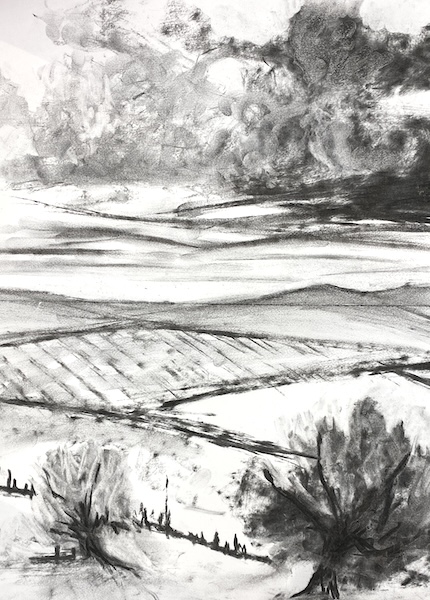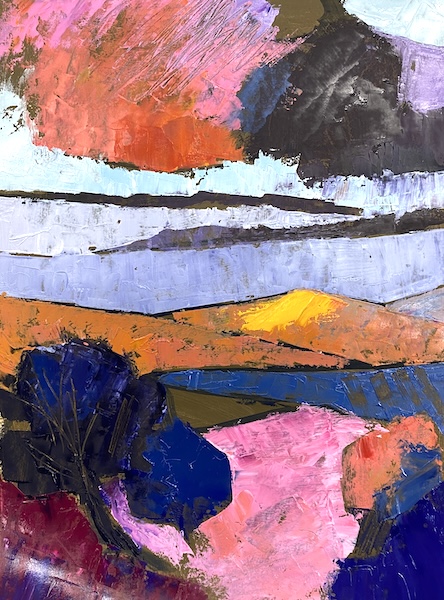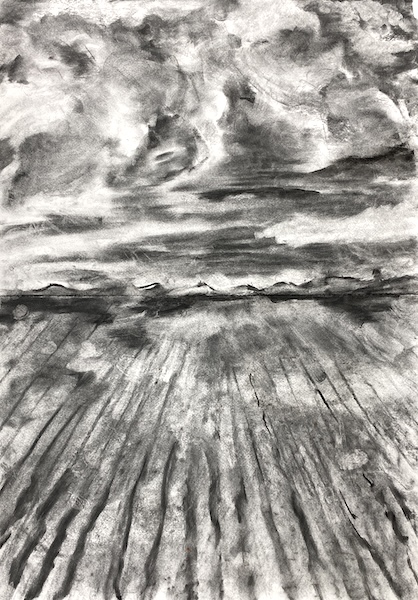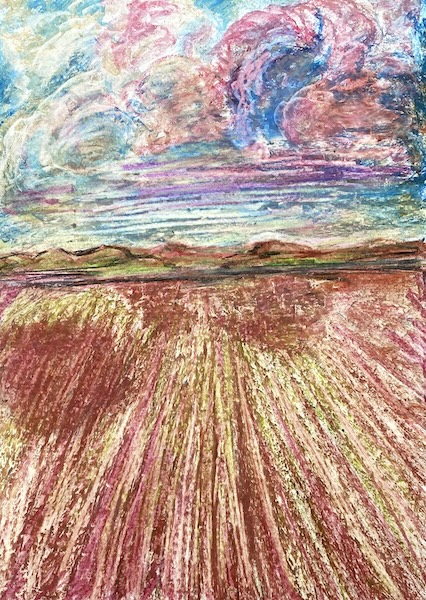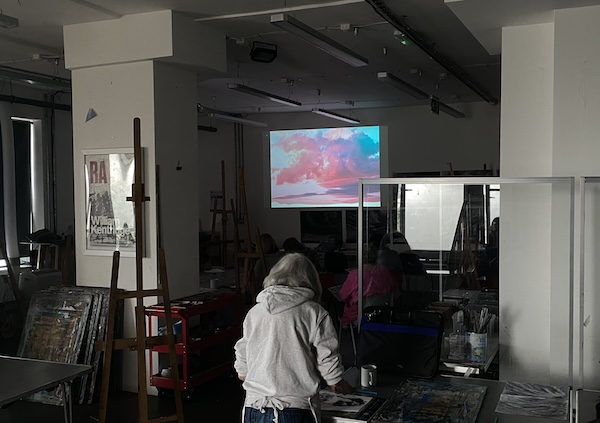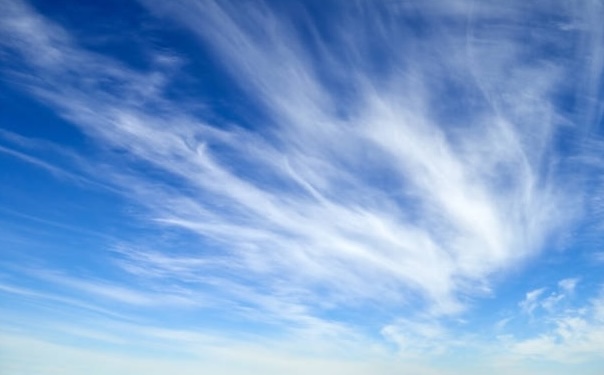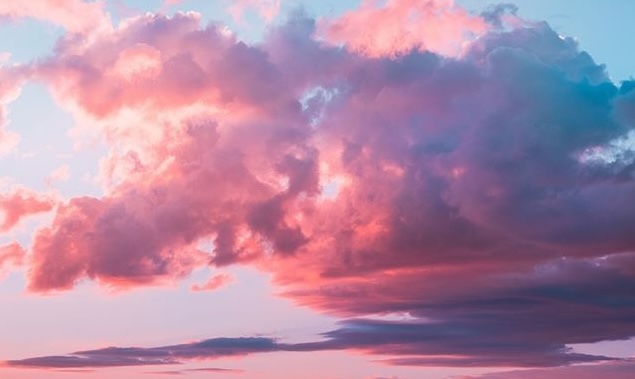Clouds in landscape paintings can appear to be something of an after- thought but in the six compositions here, the clouds, sky and land seem fully integrated.
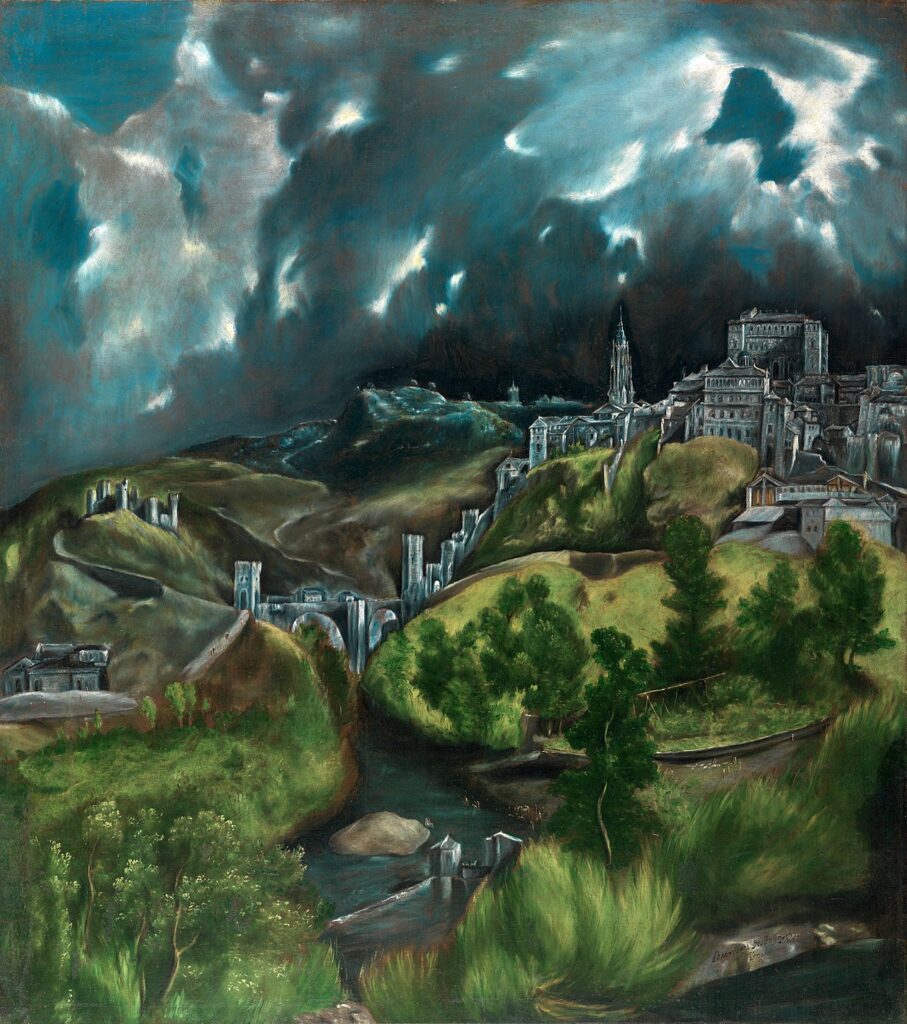
Cretan-born artist El Greco was truly ahead of his time. Although he had no followers in his time, he has influenced many modern painters since. His dramatic, mystical, almost apocalyptic landscapes were disregarded for centuries and only rediscovered by artists such as Delacroix, Van Gogh and Cezanne.
Most striking in his View of Toledo of 1599 is the dark, stormy, and restless cloudscape which dominates the grey, model-like earthbound city. By contrast the writhing clouds seem alive and eerily back-lit by an unseen light source, presumably the moon. Possibly this was to demonstrate the power of God over human activity to please his patron; the counter-reformation Spanish Catholic Church in Toledo.
Neither land nor sky, seem realistic, but the power of the clouds suggests the former is at the mercy of the elements. The cathedral is correctly placed but other buildings were moved to create a more pleasing design.
This short video by senior American curator George Goldner shows more detail of this dramatic work.
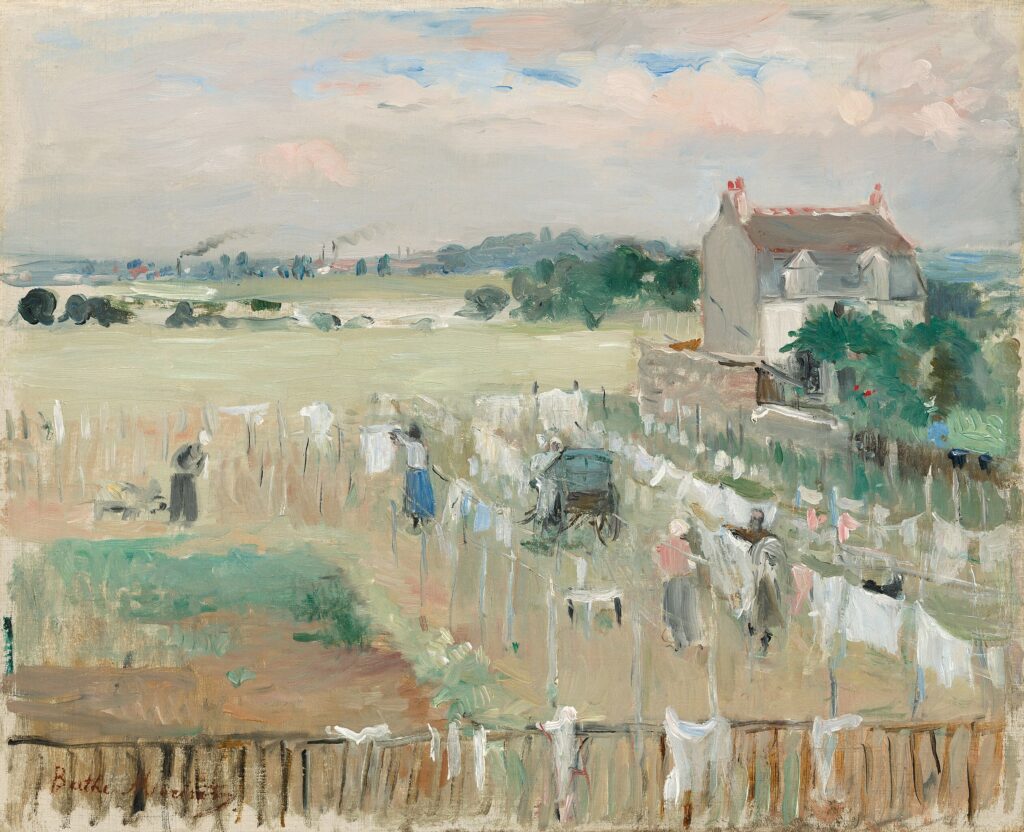
In her 1875 oil painting Hanging the Laundry Out to Dry French artist Berthe Morisot cleverly links visually the row of scudding, billowy white clouds and the lines of white laundry drying in a field. This unifies and animates an otherwise unremarkable scene. Morisot was in the vanguard of the Impressionist’s revolution beginning with their first exhibition in 1874 in Paris and later in New York. She was also an early adherent to painting directly outdoors.
The high angle of view and the fence running along the bottom of this work suggest that the viewer is excluded from the scene. Van Gogh later used these same techniques in works such as the Harvest. Morisot probably painted from an upper story window or balcony to get the best vantage point.
This 5 min video gives a good overview of her life and career.

East Anglian painter Edward Seago was a hugely popular, talented, self-taught painter, mainly of British landscapes and seascapes during the last century. As his supremely economical, deft and unfussy 1960 watercolour, Marsh and Sky shown here indicates, he was a brilliant watercolourist in particular. I suspect he painted it en plein air. Every brushmark is visible, painted confidently and not overworked. It captures the atmosphere of Norfolk’s huge skies wonderfully well and still looks fresh and alive with a rain shower not far away. You may enjoy this run-through of many more of his paintings.
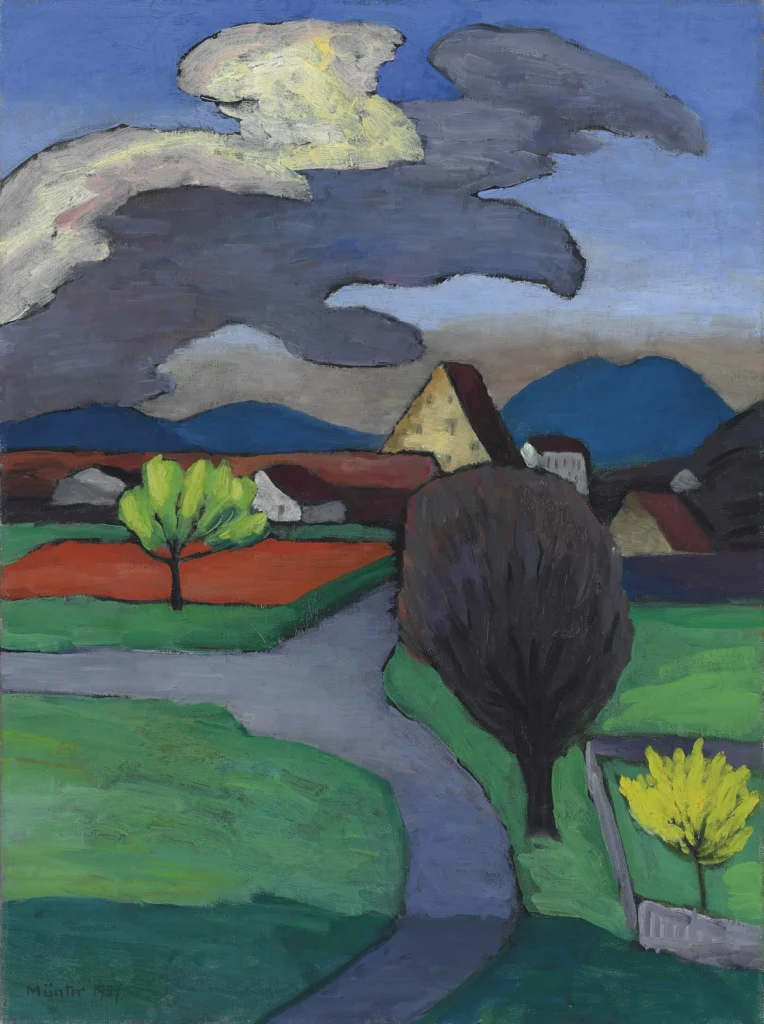
Painting with a group of artist friends, including Wassily Kandinsky, in the little alpine town of Murnau, in 1908, Gabriele Munter noted that “After a short period of agony, I made a great leap from copying from nature, in a more or less Impressionist style, to feeling the content of things – abstracting – conveying an extract.” Three years on this group became part of the leading German expressionist movement called the Blue Rider.
As can be seen in her work Clouds Over the Castle Murnau of 1939 shown here, her bold, simplified forms, darkly outlined and filled with bright unmixed colours were an artistic breakthrough. The expressive grey and white clouds seem to take on human (a grasping hand?) or spirit forms, floating above and dominating the town; perhaps to bring news or as a good or bad omen.
This video is a great introduction to both her life and how she painted her landscapes: Work by Munter can be seen at Tate Modern’s show Expressionists: Kandinsky, Munter and the Blue Rider from 25th April until 20th October.
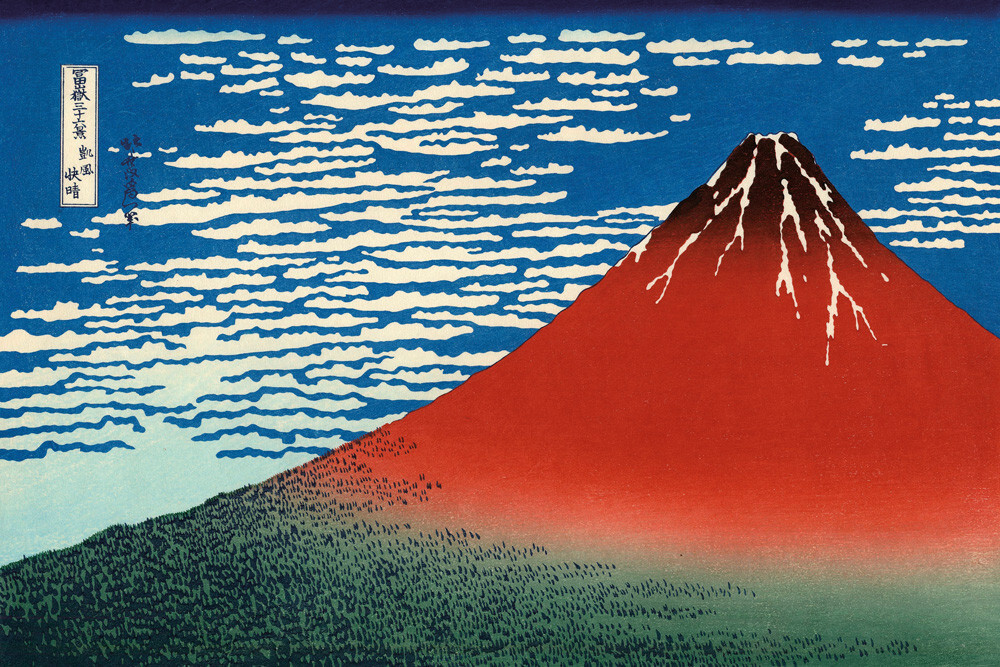
Working in the late 18th and early 19th Centuries, the prolific and hugely successful Japanese artist Katsushika Hokusai influenced the Impressionist and Post-Impressionist artists of Europe and America.
In Hokusai’s woodblock print ‘Red Fuji’, the striated cloud pattern is almost as important as the mountain itself. Also a skilled painter and draughtsman he made some 46 different prints of the sacred mountain in a variety of weathers and from different directions in order to meet huge popular demand. The striking blue of the sky was called Berlin Indigo and had only recently been introduced into Japan by Dutch merchants. The summery horizontal clouds, as well as the lines of pine trees, are crucial elements needed to balance the verticality of the peak.Click here for the Wikipedia entry which gives more information about this series of works.
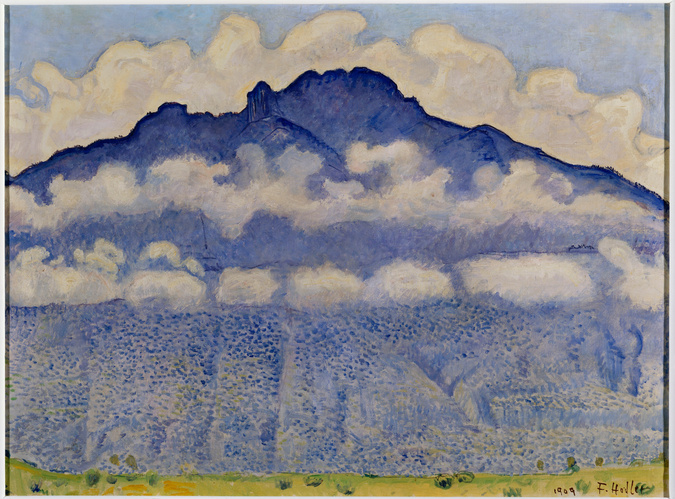
A Swiss artist who also painted mountains and summery cloud-filled skies was Ferdinand Hodler. In his 1909 work, Painting of a Mountain Hodler continued the ideas of pointillism in his use of coloured dots and simplified shapes. But it is likely that he had also seen one of Hokusai’s prints of Mount Fuji. Very similar are the triangular mountain shapes, the lines of floaty white clouds and even the line of green slopes with trees. Hodler breaks up the overbearing bulk of his mountain though with use of two horizontal lines of low clouds which help to emphasise the darker peaks. The swirling higher cloud belt also cleverly imitates the jagged appearance of the rocky ridge. To learn more about Hodler’s painting technique and inspiration click here.
A lesson idea
Here’s a nice lesson I gave inspired by the the information above, thinking about the first paragraph; ‘in the six compositions here, the clouds, sky and land seem fully integrated.’ The lesson was two hours long and for adults of mixed ability.
- Having asked students to fold a sheet of A3 drawing paper into two landscape format A4 pieces, with the fold at the bottom, I gave them ten minutes to draw from a photograph of clouds I projected on the wall. We considered the various ways that they might be able to use the drawing materials available to represent the effects of the clouds they were looking at.
- Looking at some of the images above, we discussed how the artists made the sky and land feel like they belonged in the same painting, by mirroring colours, tones, patterns, shapes, composition and the nature of the mark making.
- Students unfolded their sheets and, working from imagination, spent ten minutes producing a landscape that felt integrated with the sky.
- The above exercise was repeated using a very different photograph of clouds.
- Students were then challenged to produce a painting from one of their drawings, applying paint in such a way that mimicked their drawing and thinking about how the use of colour could also be used to connect land and sky.
